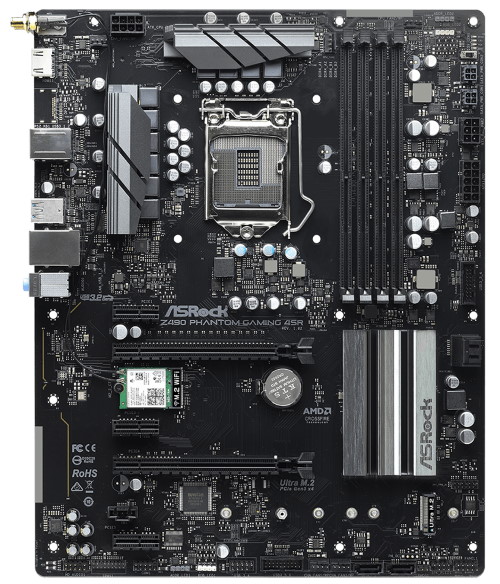
The downside is that this requires a new motherboard and a new power supply. It was believed that OEM systems will be the first to adopt ATX12VO so it's pretty interesting to see ASRock being the first with a product for the DIY market.
Our expert: Stephen Eastman, platform power specialist in Intel's Client Computing Group, and his team work on reducing the idle power that desktop PC's use. Desktop computers often spend more time idle than in any other use. Any way to reduce power used during these long stretches of minimal activity is vital to cutting a PC's overall power consumption.Below you can see the Stephen Eastman, platform power specialist in Intel’s Client Computing Group, holding ASRock’s first ATX12VO motherboard.
Less is more: Using less power is always good, but it will be even more important when governments around the world introduce new energy regulations for desktop computers. This includes EPA's ENERGY STAR for Computers v8 in 2020, the California Energy Commission Title 20, Tier 2 requirement in 2021 (with other U.S. states following), and Japan's Top Runner program in 2022. All these regulations are requiring PC makers to adjust their desktop power targets.
A single rail power supply design is one answer to help OEMs reduce desktop PC idle power and meet the new government regulations. For years there have been custom single rail power supply designs. But until Intel created the ATX12VO design and publicly shared it, there was no industry standard to help PC-makers reduce the energy desktop systems use when idling.
But it's more complicated than just a new power supply. The new ATX12VO standard requires a redesign to the motherboard. The two parts work in tandem under the new standard.
This is a part of Intel's greater PC story to enable the most energy efficient desktop computers," says Eastman. Intel is a processor company, he says, but it is also a company that helps OEMs. And that's why Intel spent the last two years creating and sharing this standard.
The industry's first ATX12VO motherboard: On April 30, PC manufacturer ASRock launched the industry's first ATX12VO motherboard around the Intel 10th Gen Intel Core S-series platform. It reduces idle power by 27% compared to a similar featured motherboard and traditional ATX multi-rail power supply design.
"We're extremely delighted to co-develop this revolutionary motherboard -- Z490 Phantom Gaming 4SR -- with Intel. This new design is able to improve power efficiency of the PC and meet new energy regulations. We believe the new ATX12VO will be the solution for the next generation of personal computer," says Chris Lee, general manager of ASRock Motherboard BU.
Intel is also working with power supply unit builders such as FSP, High Power, Channel Well Technology and Corsair to build ATX12VO power supply units to go with the motherboards.
Knowledge is power: Intel is releasing the spec to provide the industry with a consistent design. It's especially important for medium to smaller OEMs that don't have the resources to create their own power supply spec. It will allow them to continue selling devices once new energy regulations go into effect. For a consumer who wants to build their own PC, they'll have to have both the new power supply and the new motherboard that work together.
Currently, power supplies change the AC current at the plug to the DC current your computer needs. That conversion can cause the greatest loss of power when a computer is idling and at its most inefficient. Most power supply units have 12-, 3.3- and 5-volt rails, or circuitry that creates the voltage. The ATX12VO standard takes out the 3.3- and 5-volt rails and moves the creation of these voltages to the motherboard where they can be more energy-efficient.
"This makes no difference to performance. It makes no difference to the end user except for using less idle power. It just makes a difference to the system builder," Eastman says.

Here are the specifications of the Z490 Phantom Gaming 4SR:
Supports 10th Gen Intel® Core™ processors (Socket 1200) 10 Power Phase Design Supports DDR4 4000MHz+ (OC) 2 PCIe 3.0 x16, 3 PCIe 3.0 x1, 1 M.2(Key E) For WiFi AMD CrossFireX™ Graphics Output Options: HDMI 7.1 CH HD Audio (Realtek ALC1200 Audio Codec), Nahimic Audio 4 SATA3, 1 Ultra M.2 (PCIe Gen3 x4 & SATA3) 2 USB 3.2 Gen2 (Rear Type-A+C), 6 USB 3.2 Gen1 (4Front, 2 Rear) Intel® Gigabit LAN Dual Band 802.11ac WiFi + BT 4.2 Module ATX12VO Single rail power design
